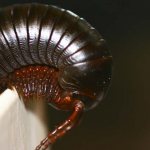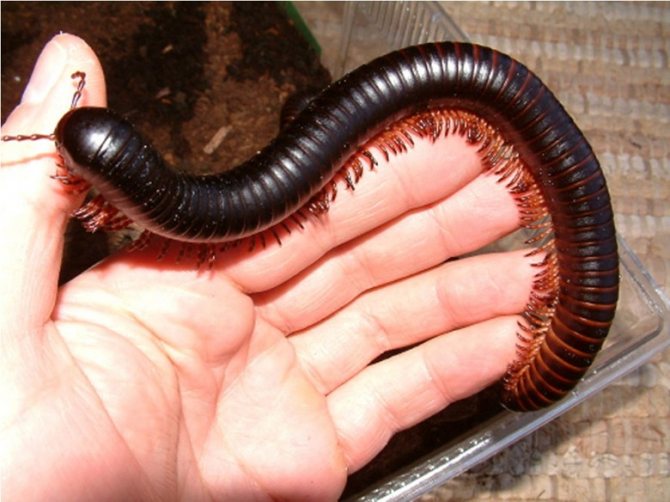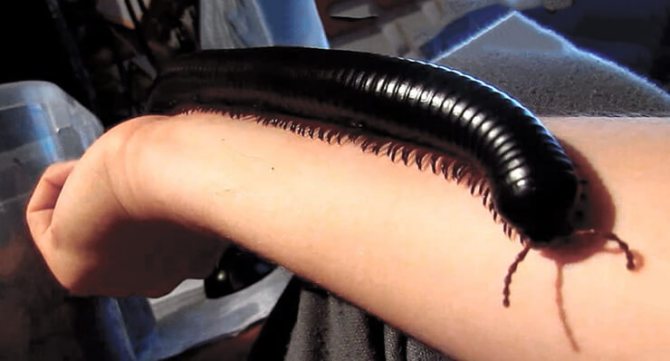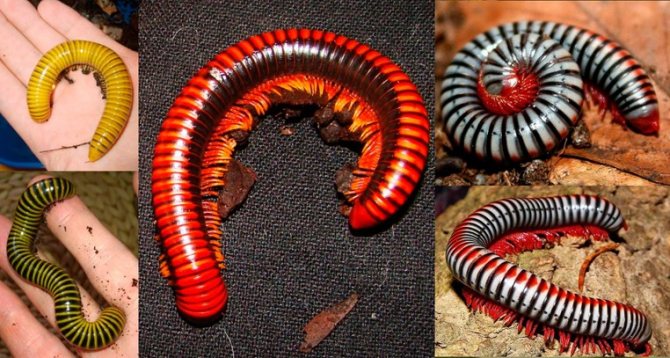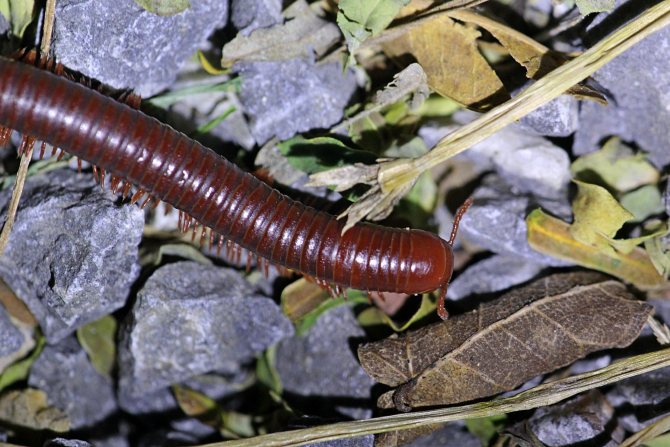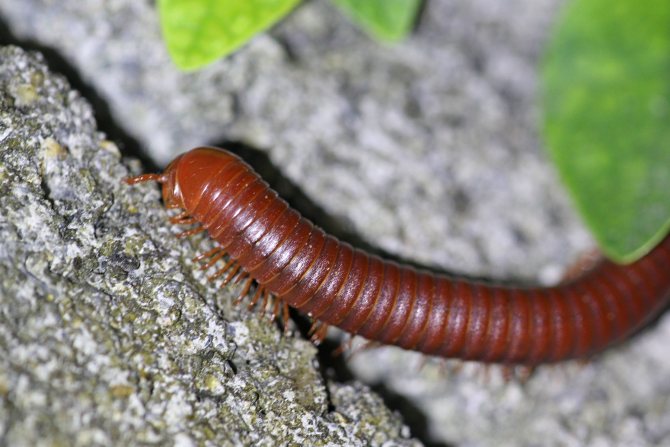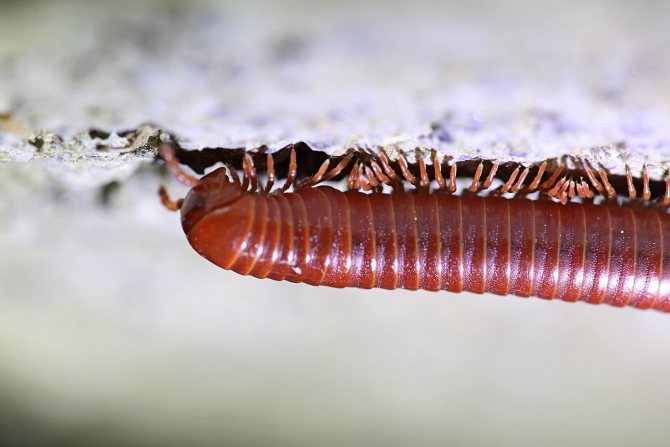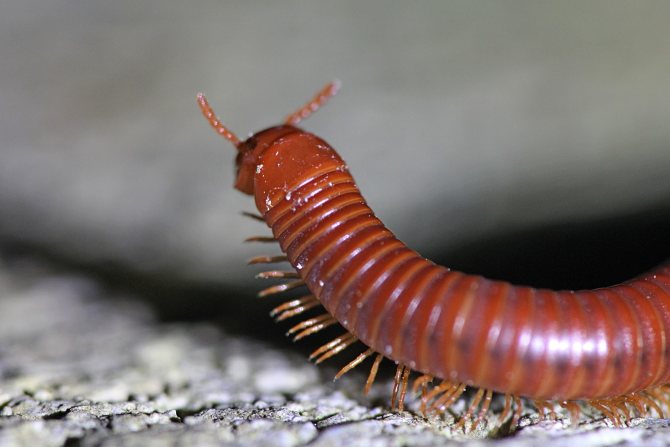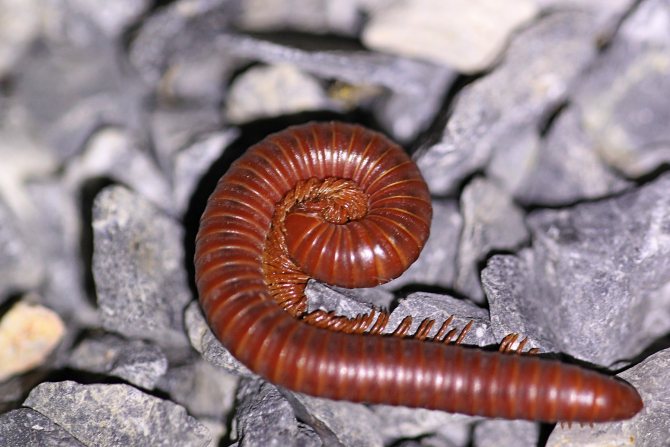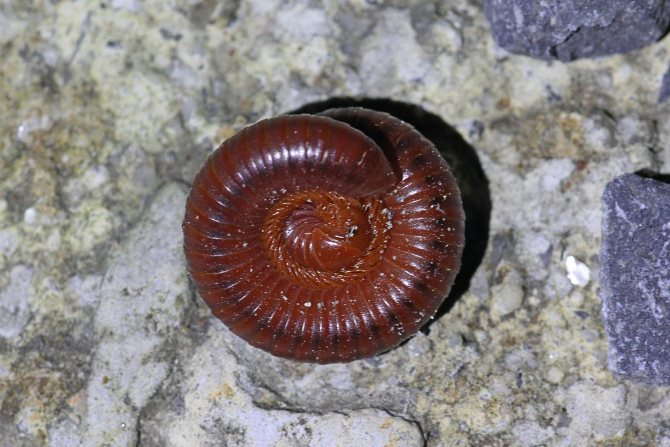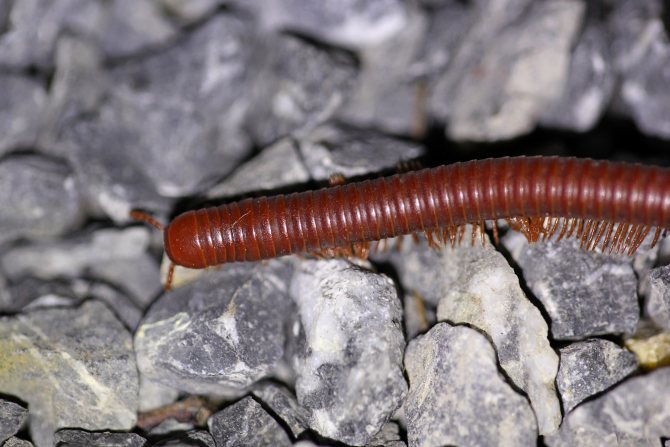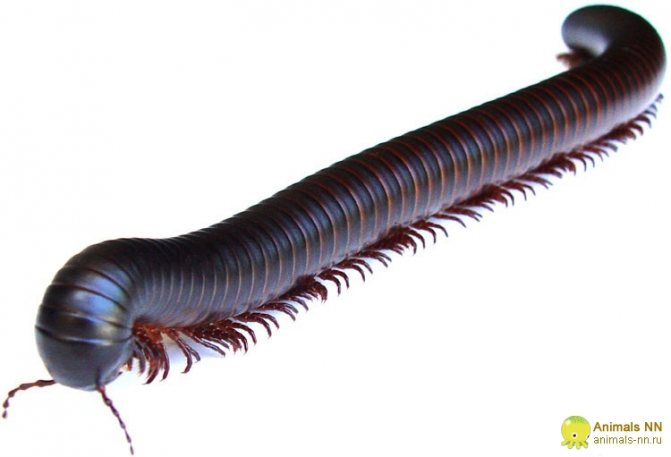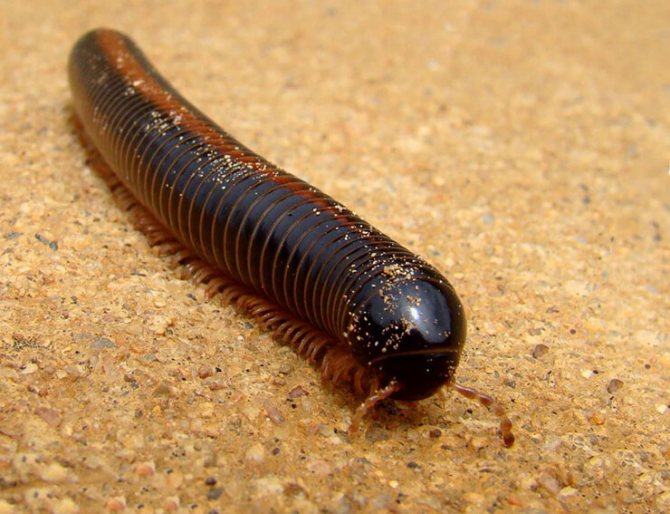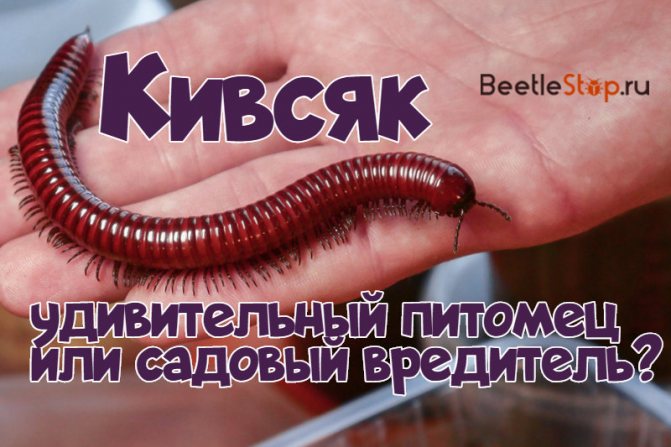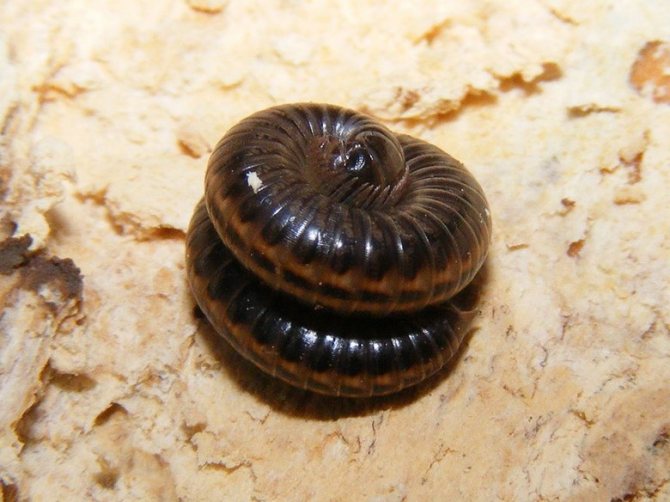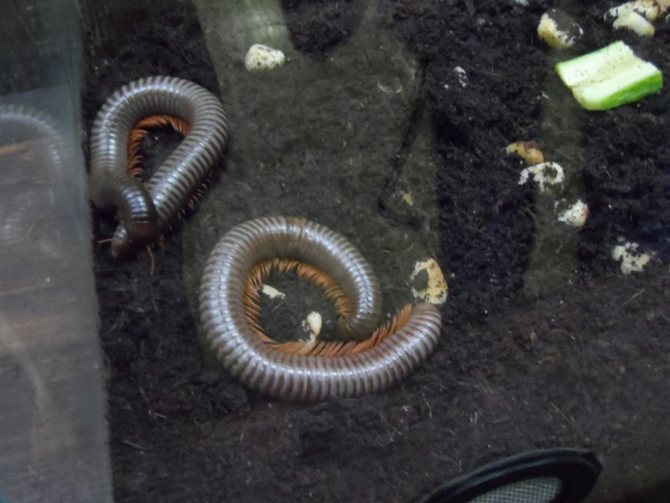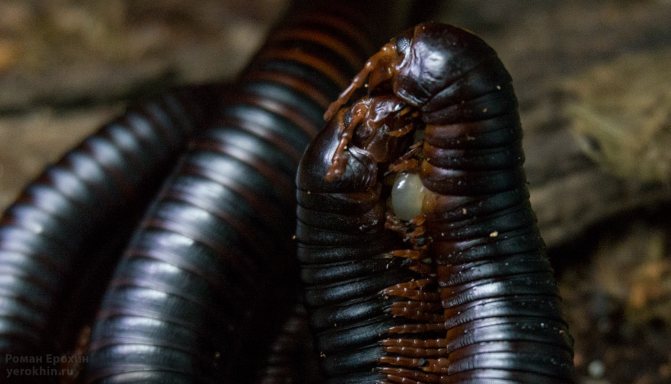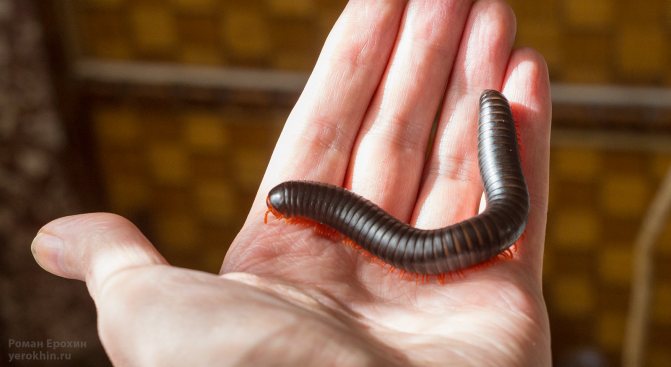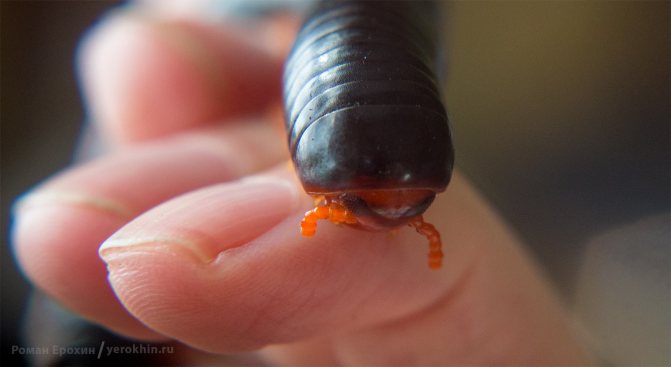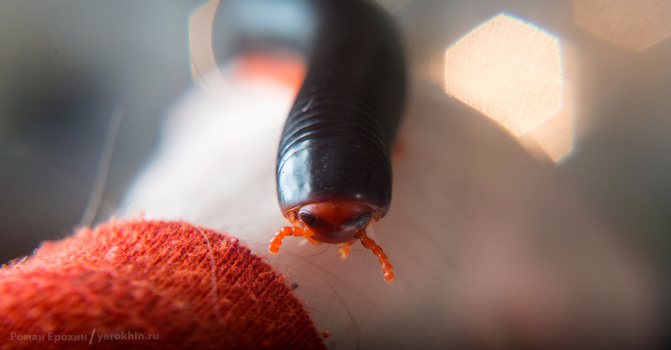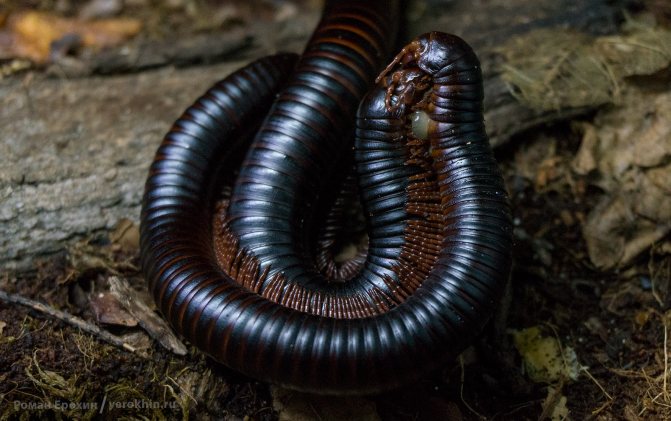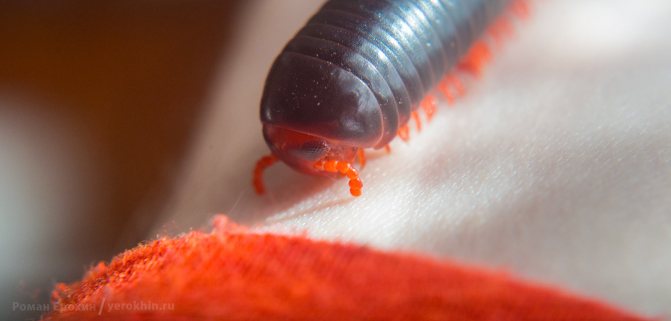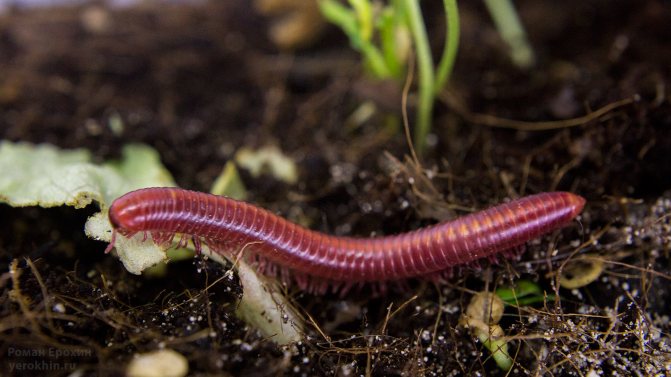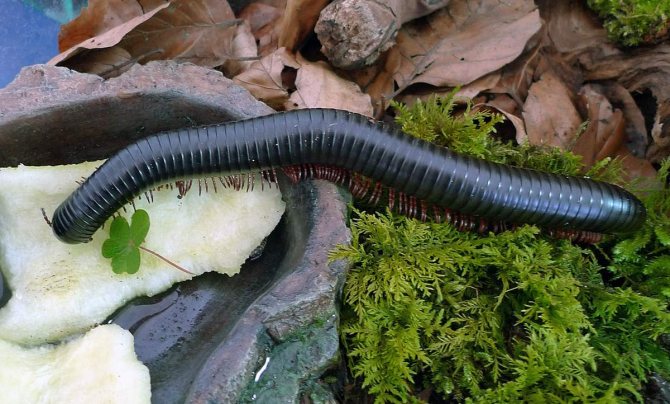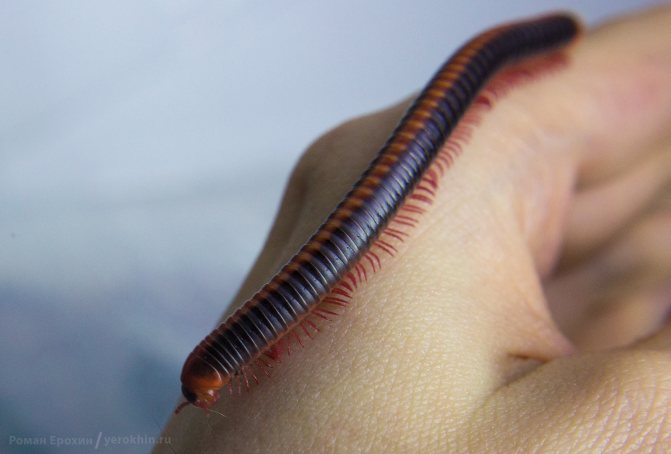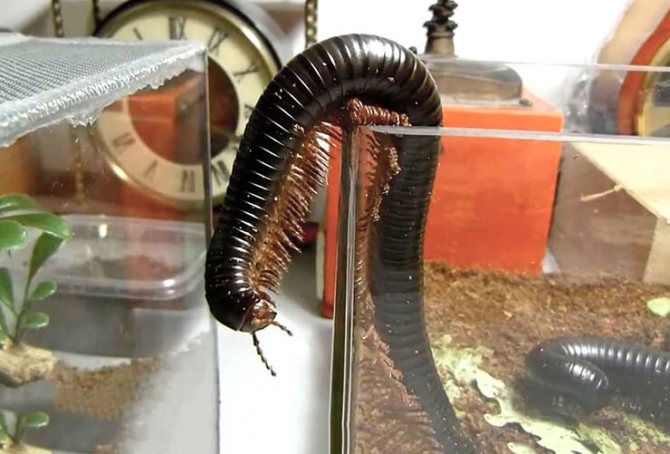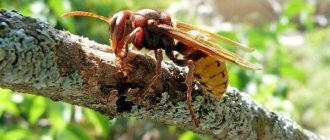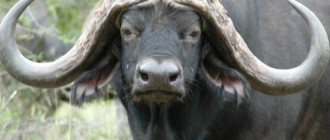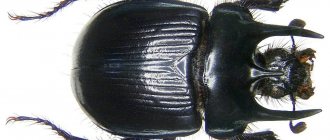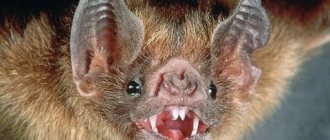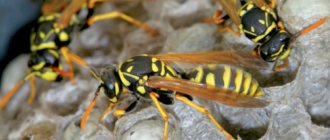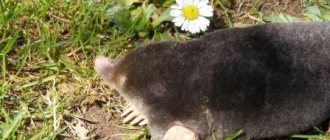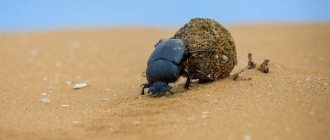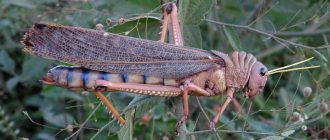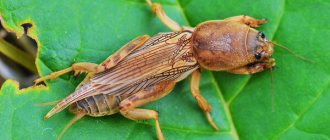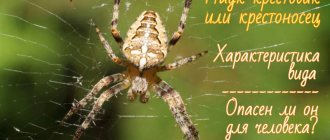Everyone has seen a centipede. You can meet both at home and on the street. Kivsiak is a squad of two-legged centipedes. Lives in the woods. Prefers moderate latitudes. The body consists of a head and numerous segments. In forests, it participates in the destruction of fallen leaves. The representative likes high humidity levels. Has many qualities similar to insects, but is an invertebrate animal. Sensitive to sunlight. With a lack of moisture in the soil, the representative crawls out to search for young shoots and destroy them.
Kivsiak is a large centipede
Where is the animal common
Kivsyaka can be found on the territory of Russia, namely, in orchards and vegetable gardens. Outwardly, the representative resembles a worm. In the Russian Federation, the animal is small. In tropical countries, the centipede grows up to 30 cm.
The animal is a representative of the class of two-legged centipedes. The main feature of the structure is the presence of a pair of legs on all segments. Scientists have described 8 thousand subspecies.
Kivsiak has many signs similar to insects. However, the representative is an invertebrate animal. It lives mainly in Asia and Africa.
Places of residence directly depend on the detachment of the animal. There are 3 groups of kivsyaks, each of which is described in the table.
| Yulida | The detachment is the most extensive. Such kivsyaks live in Eurasia. They are often found on the territory of the Russian Federation. Localized in mixed and deciduous forests. They choose the steppes. |
| Spirobolide | The detachment includes only large centipedes. The animal lives in Australia, Africa and Southeast Asia. The body length can reach 9 cm. Most millipedes have a rich body color. Colors are generally uneven. |
| Spirostreptida | Centipedes prefer tropical regions. Animals have a large head and developed organs of vision. Kivsiak can reach a size of up to 40 cm. |
Animals differ greatly depending on the area of residence. Not only the size of the body can vary, but also the color of the segments, as well as some structural features.
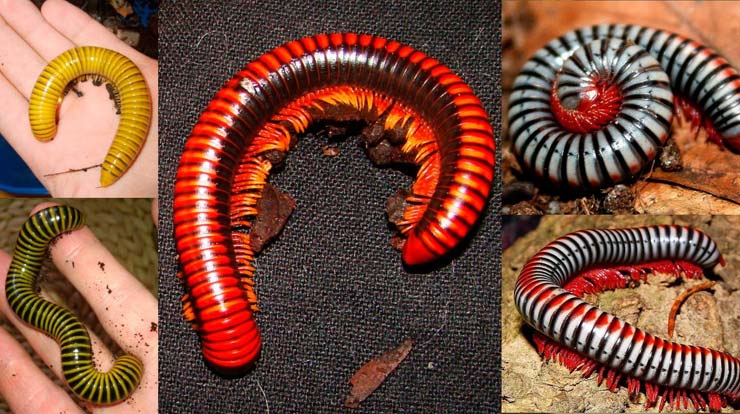
There are all kinds of millipedes.
Description of the species
Kivsiak lives mainly in tropical and temperate latitudes. It feeds on leaf fall. Fallen foliage, as you know, contributes to the formation of humus, and this is the breeding ground for these arthropods - "here is a table and a home." We add: also the main work, since in nature their main task is the processing of humus. During periods of drought and insufficient soil moisture, they sometimes crawl out to the surface of the forest litter, and with appetite are taken for eating juicy green shoots. They reach 3 cm in size, and some representatives of the species, for example, the giant kivsyak, are about 30 cm in length, the diameter of the body of this representative of the species is about 3-3.5 cm.
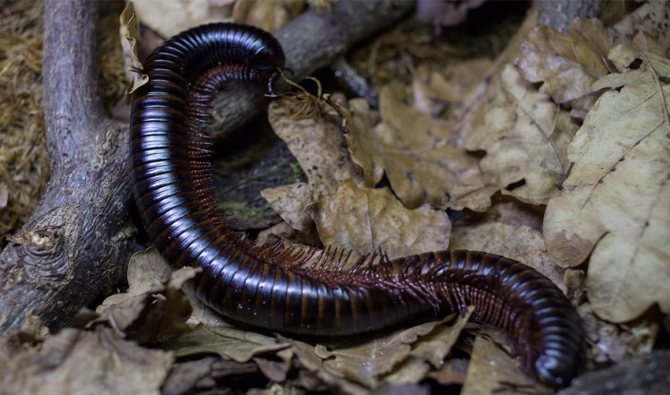

Gray Kivsiak is a common inhabitant of forests and oak forests in the middle zone of the country or its southern latitudes. The worm kivsyak is small in size, the color is more restrained, the color is inconspicuous.
These centipedes are practically invulnerable. And not because they run away quickly, not at all. They are surprised by their amazing fighting qualities. Their durable carapace can rightfully be considered protective uniforms - this is real armor, and a firearm is a brown liquid, consisting of sulfur and hydrocyanic acid. It turns out that the only people who like this composition are the lemurs.They say they come to an unspeakable ecstasy from this brown liquid. It is the prey of lemurs that the larger representatives of this species become, and the small ones live comfortably and reproduce. Experiencing one molt after another, they only build up their trunk segments. An adult has 30 or more of them. Full puberty occurs in kivsyak after 3-4 years. Sensitive to sunlight, they prefer to stay in tunnels dug into the substrate, where moisture and oxygen levels are more common.
What are the features of appearance
Kivsiak has paired limbs. On the 1st segments, there is one pair of legs. On the next - 2nd limbs. The body is rounded. Below the body is even. This is necessary for comfortable movement on the ground.
The animal breathes through the trachea. There are special breathing holes on the segments. The heart is multi-chambered.
The nervous system is directly connected to the brain. Most representatives have poor eyesight, with the exception of spirostreptides. This detachment is distinguished by developed organs of vision.
The mustache acts as a sense organ. For movement, the animal uses its front legs, and the rest move due to a kind of wave transmitted through the body.
What character and lifestyle
Kivsaki live in the forest floor. There, in addition to centipedes, other living organisms live. There are a million different representatives on every square meter.
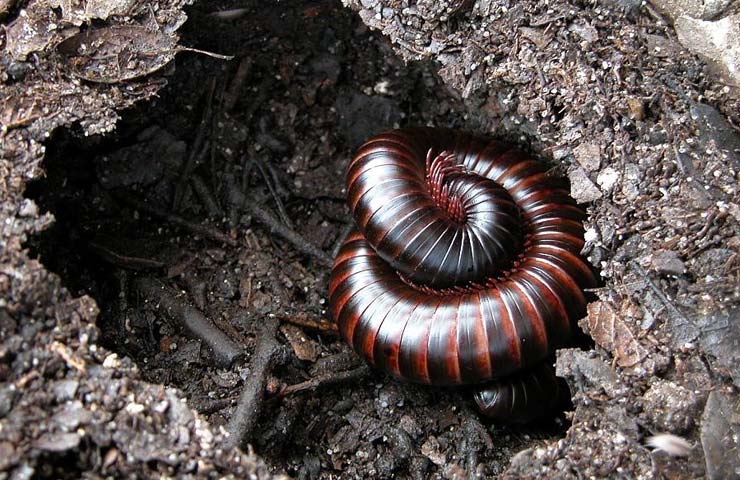

These insects dig holes in the ground
In the soil, the centipede pulls out numerous passages. The animal is excessively slow, despite the large number of legs. Acceleration occurs when danger is sensed. Kivsaki have practically no enemies, with the exception of ticks.
The animal has a phlegmatic character. Kivsyaki chase their prey without hiding. Sensing danger, the representative transforms into a tight ring. Kivsiak leads a relatively passive lifestyle. Likes to be under the ground. The carapace is brightly colored and gives off a fetid odor.
The animal is often bred at home due to its unusual appearance. Collectors tend to prefer tropical varieties. For maintenance, you will need to purchase a large terrarium.
Kivsyak is shy. Any danger leads to the need to roll up into a tight ring. For protection, the insect releases a poisonous substance that has a fetid odor. The nature of the animal is peaceful. Despite this, you can only pick up a kivsyak with gloves. Otherwise, the foul-smelling substance can completely ruin the clothes.
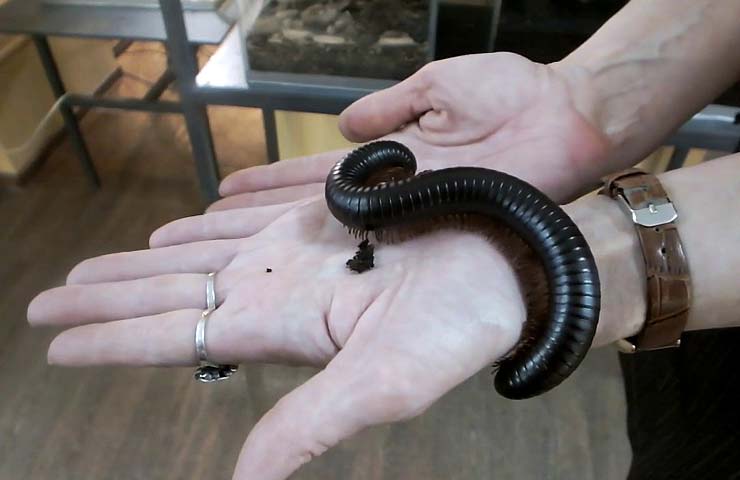

They are often bred as exotic pets.
African kivsyak
The giant kivsyak is a significant representative of this species, an inhabitant of the rich diversity of the fauna of hot orange Africa. At first glance, it resembles a slow, huge creature, but thanks to its numerous legs (it has 700!) It is able to disappear from sight rather quickly.
As you can see from the photo, the millipede has a round shape in section, which allows it to move quite quickly in the ground. The limbs are paired.
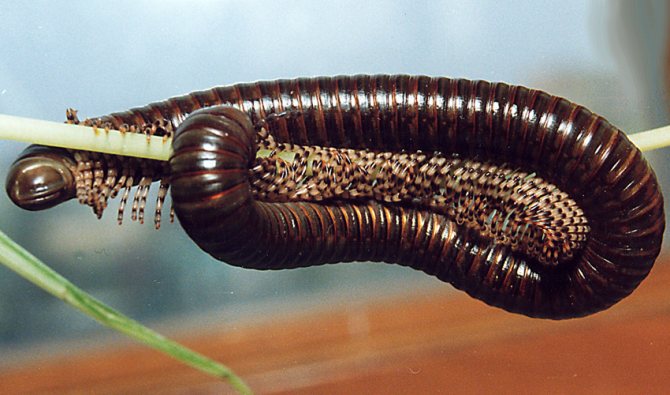

Endowed with an elegant color. Has numerous trunk segments.
Sexual dimorphism of males is expressed by a bright shine of the skin, the hard protective shell even slightly gives off a metallic sheen. The spectrum of color variety is close to natural shades:
- olive,
- the black,
- brown,
- brown.
There are bright red representatives or black ones with red legs.
You can find individuals whose cover has a bizarre ornament. The African Kivsiak seems to have surpassed its brethren, as its coloration is similar to a kaleidoscope of color: it consists of blue, red and yellow segments.
Extraordinarily beautiful olive - you can't take your eyes off! The color of the segments has transition lines and delineations; subtly flowing into each other color schemes seem to have been thought out by nature itself.
Whether to be afraid of kivsyakov in the house
Kivsaki often settle in natural conditions - under stones, leaves, garbage, etc. It is there that the humidity persists for a long period of time, and there is also no direct action of sunlight.
Occasionally, animals enter the house. This happens quite rarely and is associated with a sharp jump in the number of representatives. Kivsiak is developing new territories for living and settles in a bathroom or a kitchen. The bedroom and living room are not suitable for living, since there is no additional moisture.
A person can be scared by their appearance. Moves mainly along walls and ceilings. In case of danger, it curls up into a tight circle. Animal:
- does not bite;
- is not poisonous and dangerous to humans;
- does not tolerate diseases and infectious processes.
If you get the secretions of kivsyak on your hands, it is enough to wash them. Removing the stain from clothing is more difficult.
Anadenobolus monilicornis (Anadenobolus monilicornis), they are also Bees, they are also kivsyaki Beeline
Monilicornis are one of the most inexpensive and common kivsyaks, native to the Caribbean. Some of the smallest (there are fewer species, but they are rarely kept) and the most photogenic in macro photographs. There are several more similar large species, but insanely rare and not as easy to keep as these babies.
Not only that, they are also some of the most prolific. Even if you buy them as babies, then in six months they can already become sexually mature and get a lot of offspring. Their main drawback is, of course, their size. Adults grow to an average of five to six centimeters.
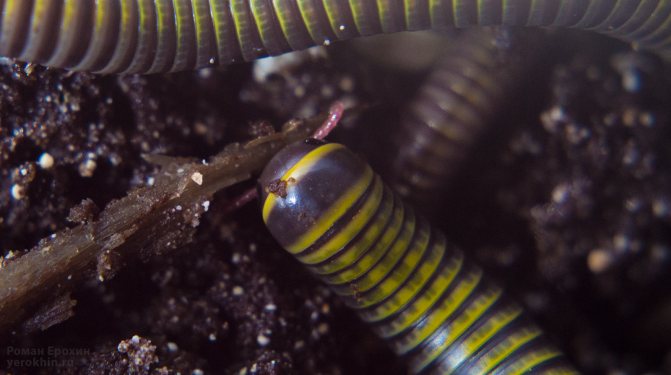

But in the photographs they are handsome, real bees. In the frame below, you can see a running wood louse, this is a dwarf tropical white wood louse Trichorhina tomentosa, here it seems large, but the size of adults is only 4-5 millimeters, can be compared with kivsyak. That is, the increase is very large.
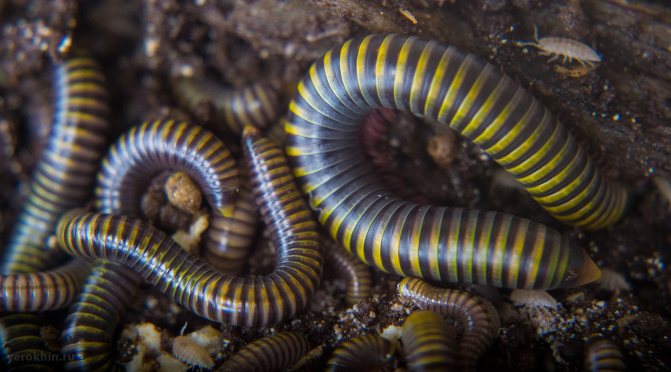

For Anadenobolus monilicornis kivsyaks, a comfortable temperature is considered to be 26 degrees (they are quite thermophilic). Comfortable humidity 80%. They are also omnivorous, do not get used to any kind of food. Color is not gained immediately. They are born transparent, light, then you can see black dots on the sides, and later, becoming adolescents, they gradually turn black and yellow.
Are they dangerous for indoor plants
Centipedes are dangerous for plants. You can create favorable conditions for the development of the animal by regularly pouring the remains of the tea leaves into a flower pot. First, the kivsyaks will eat the remains of organic matter, and then they will take up the flower itself.
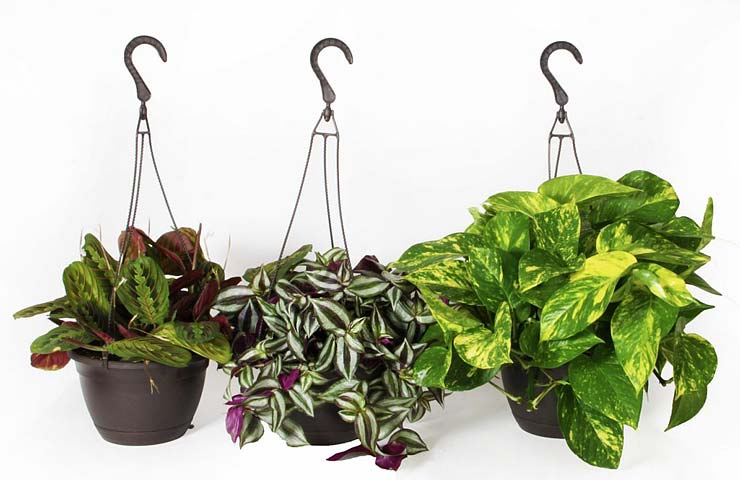

These centipedes can harm houseplants.
If new inhabitants are ignored, the pest colony will grow rapidly, destroying indoor plants in the dwelling. It is easy to eliminate nodule. Simply place the flower pot in a bucket of water. The animal will float up. It is necessary to collect and destroy the pest.
What the animal eats
The animal has an extraordinary gluttony. For 30 days, kivsyak destroys a bucket of food. The diet is based on leaves and mushrooms. Additionally, they consume tree bark and organic residues.
When kept at home, they are omnivorous. Consume food indiscriminately, including meat. It is interesting to know that kivsiak loves chalk and eats a substance to strengthen the shell. Instead of such a treat, the animal is given crushed eggshells.
When keeping at home, food leftovers should be cleaned up regularly. This will prevent mold growth.
Kivsaki are pests. They often live in summer cottages. They eat up plant roots. Saplings cease to develop fully. The supply of the required nutrients from the mail stops.
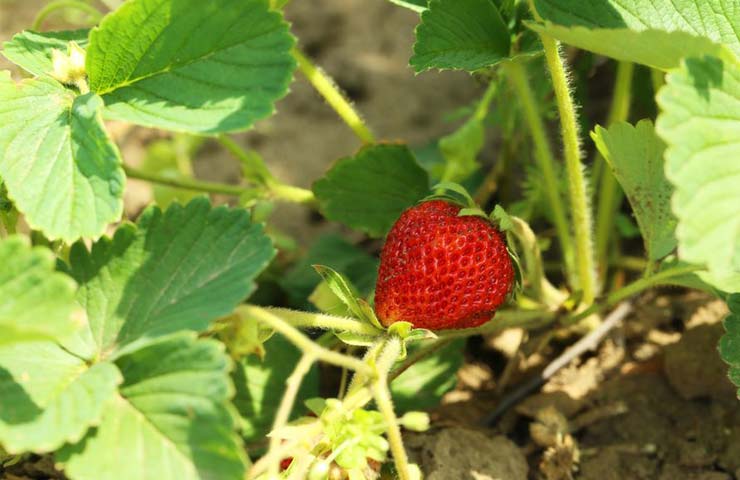

They often settle under strawberry bushes.
Over time, damaged plants die completely. The gardener runs the risk of losing his harvest. Corrective measures should be taken as early as possible.
The favorite place for the animal is strawberries.A representative is capable of getting under a berry bush together with low-quality manure. Therefore, the choice of fertilizers should be approached responsibly.
What are the features of reproduction
They lay their eggs in the soil in the same place where they live. In the future, young larvae hatch from there. Outwardly, the caterpillars are very similar to the adult representatives. The only difference is the smaller number of legs.
Young larvae live under the ground. They practically do not creep out. The male is different from the female. Representatives can be distinguished by homopods resembling limbs. They are located at the head of the male centipede.
At home, the animal is difficult to breed. It is required to regularly maintain the desired humidity conditions. Otherwise, the creation of a new generation is impossible. The female will not be able to lay eggs.
In this video you will find useful information about the content of kivsyaks:
Woodlice Dalmatians and Oranges (Porcellio laevis Dalmatian and Orange)
I didn’t even expect woodlice to please me so much. Still, these crustaceans are more like a forage crop, but no, these are large, and they grow up to 2 centimeters, very decorative and very interesting. And you can use it as feed.
I already have six types of wood lice, most of them are no more than a centimeter, but these Dalmatians and orange real cows. Very large, cool and active crustaceans.
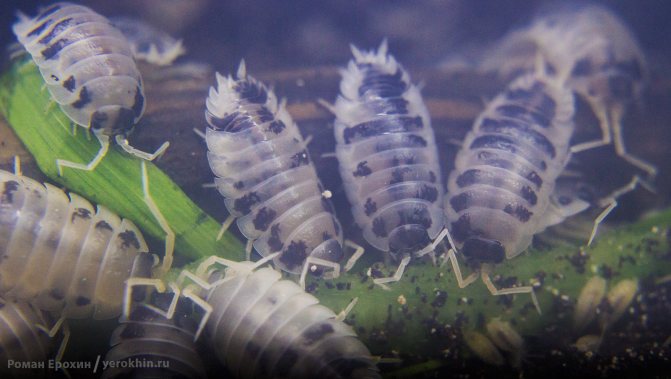

They eat mainly rolled oats, gammarus, peeling cucumbers, bell peppers. Be sure to need a lot of calcium in heaps on the ground.
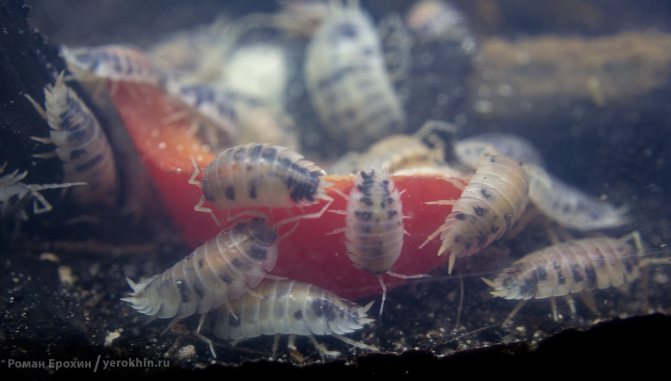

Pieces of bark, twigs and rotten pieces are very much needed. Some branches and bark can be stuck vertically into the ground in small pieces of up to 10 centimeters, and also a large flat one can be put on two branches lying on the ground, so that like a roof in the form of a house and only a centimeter or less above the substrate. Woodlice love such surfaces and are very fond of vertical ones, it is more convenient for them to live on and easier to shed. And it is convenient to spray on these pieces of wood. Below, in the frame with orange woodlice, I turned over one such bark. From below, they eat away the surface, which serves as both food and shelter.
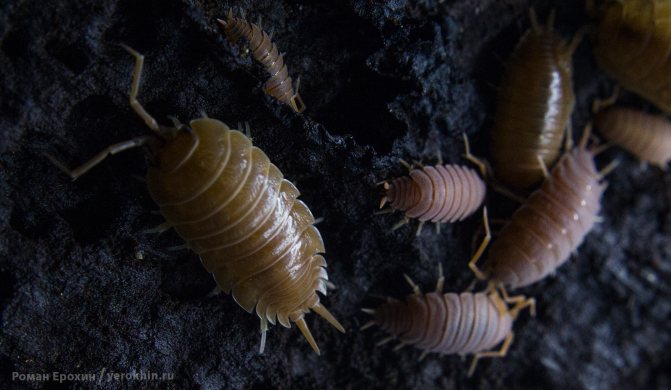

Even the passages are eaten in the bark. But many kivsyaks do exactly the same. They are very similar in content. And woodlice (this species) do not require high humidity, a standard periodic humidification is sufficient. But I will also write a lot about woodlice separately, and this article is more about kivsyak, so we put the crustaceans aside and let's continue about the other centipedes that I still have.
What are the features of living in the garden
Kivsiak is a pest. As food it prefers agricultural plants. The animal gnaws at the rhizome and thereby slows down the growth of the flora. It is the spotted subspecies that often settles on the site. The body of the representative is white or beige, and the spots are red or brown.
From under the ground, the animal crawls out only on cloudy days, when the humidity indicator increases. For a long time, the owner is not able to guess about the presence of a pest on the site. Kivsiak often lives near food sources - a dung heap.
The clutch of eggs is localized near the plants. New offspring will be formed in 14 days. The pest is interested in food:
- beet;
- potatoes;
- carrot;
- tomatoes;
- watermelons.
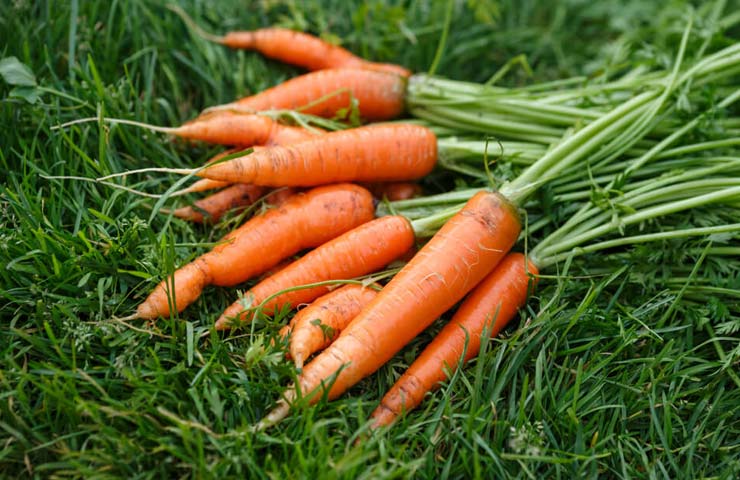

Kivsiak can eat carrots
In the absence of processing, the centipede eats more than its own weight. It is capable of completely destroying the entire crop.
What conditions are required for home maintenance
They contain kivsyak in the terrarium. The animal does not like light and prefers to be in the twilight. The container for the content does not need special arrangement and planting of plants.
The terrarium is placed in a quiet place, away from direct sunlight. Moistening the soil is mandatory every two days. The temperature should fluctuate around 25-30 degrees.
Ticks appear periodically in the animal. You can eliminate parasites with a stream of water.
Give fruits and vegetables.Once a month, eggshells are added to the diet as a vitamin supplement.
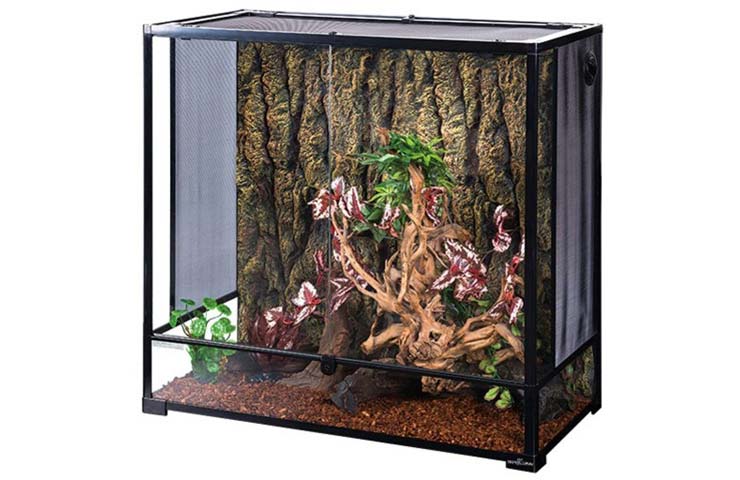

A special terrarium is required for keeping
Food
The diet consists mainly of decaying plant fragments and rotten wood. If possible, gourmets will not deny themselves the pleasure of eating a little ripe fruits, vegetables, feces or carrion.
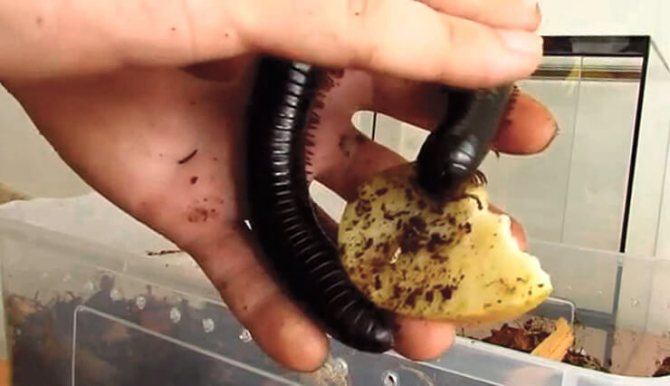

The unicellular organisms of Archaea (Archaea), which live in their digestive tract, help them to digest poorly nutritious food, which release methane in the course of their vital activity.
Food of animal origin in the menu takes up no more than 10% and is consumed only on certain days.
The rest of the time, giant centipedes remain staunch strict vegetarians. What caused this selectivity, there is no convincing explanation yet.
What are the ways to fight
Kivsyak, who lives on the site, is eliminated as early as possible. Ways to fight:
- introduction of special chemicals into the soil;
- careful digging of soil in autumn and spring;
- permanent elimination of weeds;
- soil treatment with potassium permanganate solution;
- the use of special traps.
The struggle is complex. Additionally, the owner must carefully inspect the purchased fertilizers. In low-quality options, kivsyak is found. Regularly remove from the area a variety of debris that could become a home for the animal.
The purchased seeds are treated with specialized chemicals. Self-collection of the pest is not effective. You cannot manually collect kivsyakov. Better to use proven methods.
Luring in compost pits
The method of using bait-traps has been developed in the following way. They tear off pits like compost pits. Ensure their attractiveness to invertebrates by filling them with all organic garden waste.
The efficiency of catching and destroying millipedes increases with layer-by-layer processing of the contents with chloride salts (sodium or potassium).
If the mixture is regularly moistened, stirred and covered with sod in the summer, a climate unfavorable for protein life will be created inside. In late autumn, compost is scattered over the soil surface for freezing.
The cabbage bug damages the leaves by sucking the juice out of them. The odorous woodworm is also called willow, because willows are his favorite food. You can find a full description of the insect here.
To combat the potato moth, you can use both chemical treatment and folk methods. You can find detailed information on this link.

